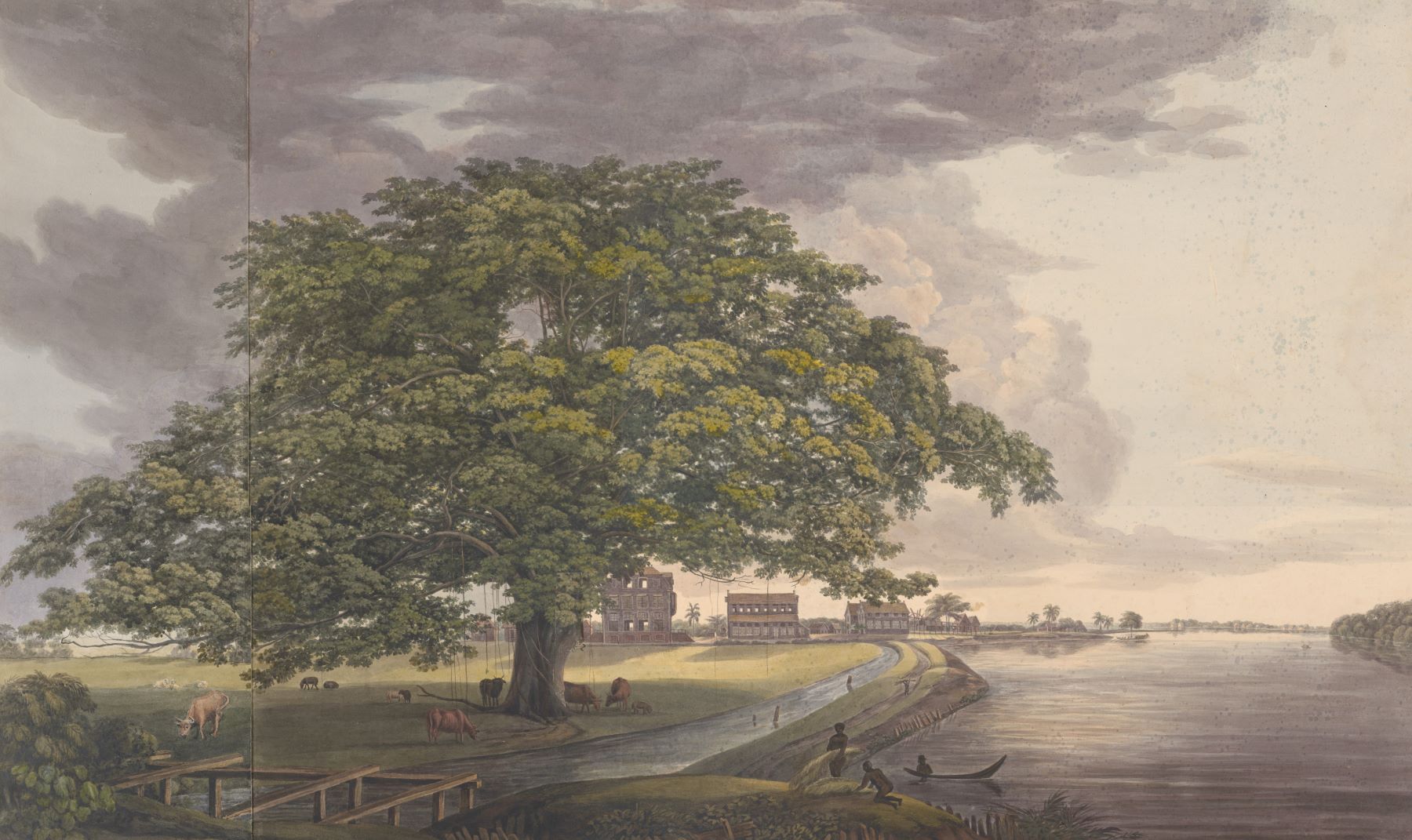Plantation Alkmaar
Alkmaar in Suriname 1745-present
November 26, 2022 to March 19, 2023
Alkmaar's slavery past highlighted
From November 26 t/m March 19, 2023, Stedelijk Museum Alkmaar presents the exhibition Plantation Alkmaar. Alkmaar in Suriname 1745-present. It highlights the history of slavery in Alkmaar and specifically the story of the Alkmaar plantation in Suriname, a little-known and little-researched theme in Alkmaar history. The exhibition will display a wide variety of objects, such as tools, crockery, archival documents, maps and works of art. Very special is a series of watercolor drawings of plantation Alkmaar and its surroundings, made in the period 1811-1816 and never before exhibited in the Netherlands.teld.
Plantation Alkmaar in Suriname
In 1745, plantation Alkmaar was established on the Commewijnerivier in Suriname. The plantation would grow into one of the largest sugar plantations in Suriname. After the plantation closed, Alkmaar continued to exist as a village, now with about 6,000 inhabitants. The second and most important part of the exhibition will be about this sugar plantation.
In 1745 the Alkmaar native Jacobus Hengevelt (1696-1746) bought a large piece of land on the Commewijnerivier in Suriname. Hengevelt had been living in Suriname for several decades, where, like his father in Alkmaar, he was a surveyor and mapmaker. Even before the plantation went into operation, Hengevelt died, but the Alkmaar name remained. His widow Catharina de Lies remarried in 1747 to Charles Godefroy (1704-1773), who is considered the founder of plantation Alkmaar.
Plantation Alkmaar, in the vernacular Goedoefrou called, was one of the largest of its kind: where at one time more than 600 enslaved people were put to work. Coffee was first grown, and after the introduction of the steam engine, they switched to sugar. When slavery was abolished in 1863, there were 445 enslaved people living on the plantation (by comparison, there were 77 on neighboring Zorgvliet plantation). These people had to work on the plantation for another ten years, after which contract workers from India took over the work.
Watercolor drawings
Plantation Alkmaar has had several owners. In 1811, Willem Benjamin van Panhuys (1764-1816) bought the plantation. His wife, Louise van Panhuys, made about eighty large watercolor drawings during the five years she lived in Suriname (1811-1816): from the crops being grown to the people around her, and from the plantations in the neighborhood to the capital Paramaribo. Of these, 23 will be on display in the exhibition.
Enslaved Joanna
The story of plantation Alkmaar is told through personal stories and different perspectives, including enslaved Joanna, one of Suriname's "most famous" enslaved women - the lover of Scottish-Dutch soldier John Gabriel Stedman (1744-1797). Stedman was one of the first to publish a comprehensive description of Suriname. When John returned to the Netherlands in 1777, he left Joanna and their infant son Johnny on plantation Alkmaar. Until her death in 1782, Joanna lived there.
Dimitri Madimin - Last story carriers
Commissioned by Stedelijk Museum Alkmaar, artist Dimitri Madimin (b. 1975) traveled to Alkmaar, Suriname, to create portraits of residents of the former plantation. These "last storytellers" have an important place in the exhibition. One of those portrayed is Madimin's grandmother, who grew up in the children's home on Alkmaar.
The exhibition is curated by guest curator Mark Ponte in collaboration with junior curator Juliet Harrison and museum curator Christi Klinkert.
